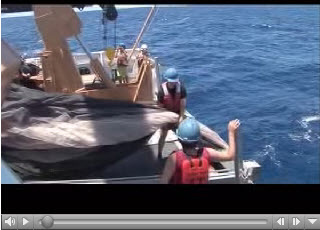The tax net issue surfaces on the radar screen on a number of occasions. First, when the original target is set, when the current one is in doldrums and a revised target is evolved and when a fresh exercise commences for the ensuing year revenue targets, just to mention a few instances. So where is the hole?
Tax revenue collection stood at around Rs1,340 billion in financial year 2010 and a target of Rs1,667 billion was set for fiscal 2010-2011, upped by almost 25 per cent.
Beginning from the early nineties, innovative methods are put forth, as the proponents claim, as opposed to tried and tested methodology, to bring some sort of equity in tax collection and give a face-lift to the human-power in the tax machinery. In the process to smoothen out the red-tape, higher targets are set to bring in incremental revenues compared to the year gone by.
The question is: have such new methods, thinking or change in the mindset brought any results worth mentioning? The answer is in the negative. Nawaz’s government tried a banker as CBR (FBR) head, to demonstrate a kind of innovative thinking, to achieve higher tax revenue. It did not work. Later the Musharaf regime picked up a professional accountant to put things right. He not only impaired his reputation as a keen professional serious in his task, but as a sequel lost his job. But the sharing of responsibility for the failure was put on back-burner.
The improvement in tax to GDP ratio, one of the world’s lowest, is hard to achieve. The ratio has varied between 9.5 and 10.4 per cent for a pretty long time. The new target of 11 per cent is yet to see end of the day, with floods and disruptive business scenes adding to the impediments.
Recently, a NY Times report on the issue of tax evasion in Pakistan said: ”Fewer than a million (about two per cent) out of 170 million Pakistanis voluntarily filed income tax returns last year. The rate is among the lowest in the world.” As the story goes, it is rampant tax evasion. But for any substance in the argument, one needs to see a representative figure of tax-filers, particularly in case of a developing country like Pakistan. A refined comparison entails taking only those above 21 years who earn and are deemed to be liable to pay tax. This will provide a realistic picture.
Many World Bank reports have indicated various loopholes including cash transactions, informal sector and exempt income, to be stumbling blocks to improve and widen the tax net. These factors have time and again frustrated efforts to boost revenue. The lack of accountability is a prime reason for the failure.
These issues need to be given the right proportion of time and effort. The WB has gotten Pakistan’s renewed commitment. As such, it has stressed that the FBR should enhance performance by improving integrated management system to monitor taxpayer compliance and electronic filing of returns. It also accentuates the need of extensive cross-checking of information, which would provide a strong justification for the proposed restructuring.
Having said that, we should seriously focus on avenues that are required to be brought under tax net in an equitable manner. This exercise should in no way put additional burden on the less than existing one million tax payers. Tax on agriculture can surely increase revenue.
It is time to have an integrated, diligent and honest approach to make the tax system more justifiable, equitable and legitimate. It also follows that the method employed for collection and the tax machinery should be efficient. Once the accountability exercise is put into practice, a lot of heads will and should roll.
